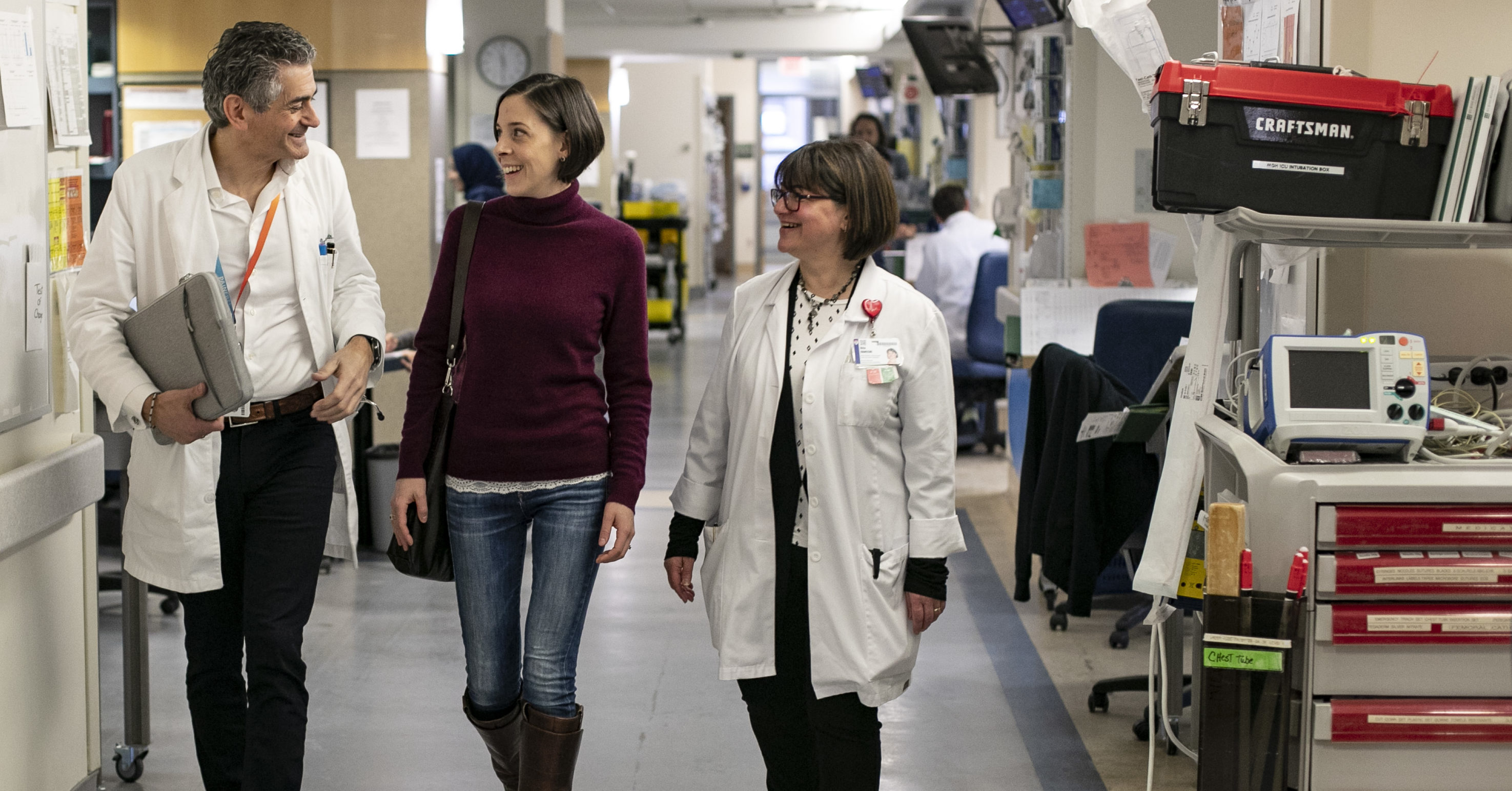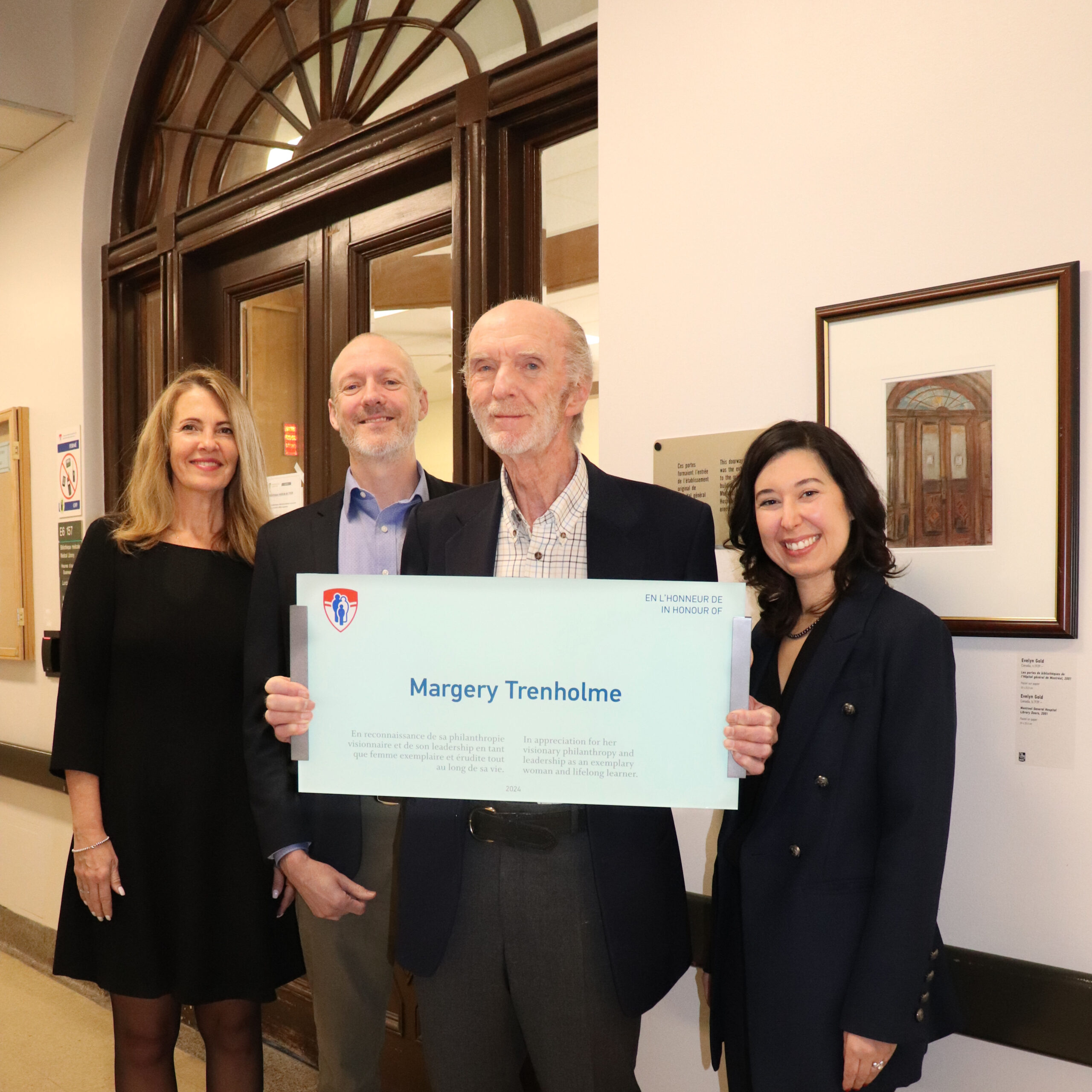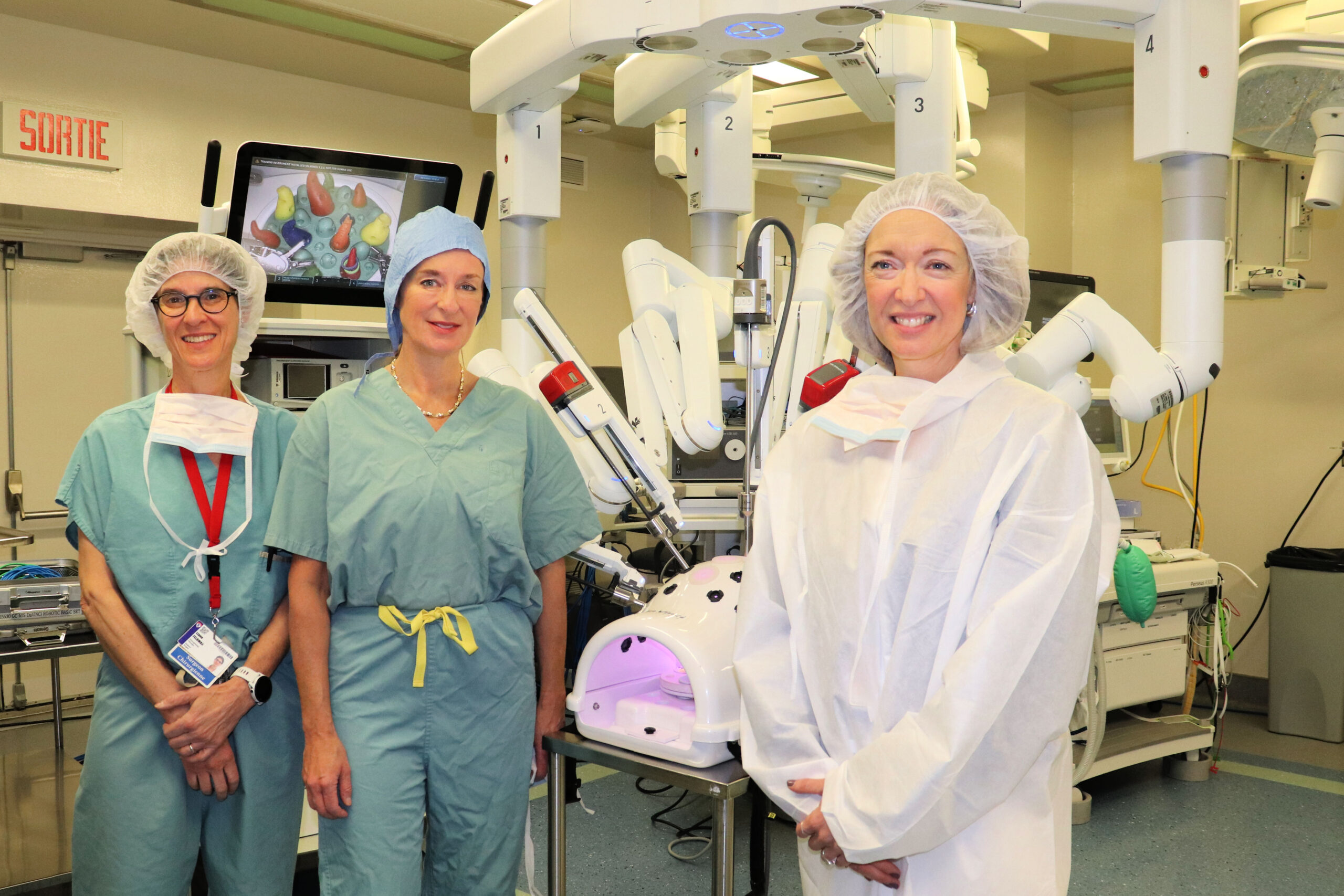The Nursing Profession
Many are those who chose the profession because they felt a strong need to help others. Many, as well, are those who continue to practice out of passion, love for a good challenge and fascination for the unknown. While it’s still true that the majority of nurses are women, increasing numbers of men are making their presence felt in this multifaceted milieu.
As the world celebrates Nursing Week, we sat down with seven nurses, of both genders and all specializations, to learn more about the profession that pushes them to do better every day.
The emergency room: from triage to severe trauma management
Carole Filteau has been working at the Montreal General Hospital for thirty-eight years and has spent the last thirty-three in the emergency room. The things that first drew her towards the specialization still hold true today: the search for challenges, the constant change, and the love of teamwork.

As ER manager, she also shares that sense of belonging and that thirst for knowledge with the nurses she supervises.
“My role is to make sure the system works, that my teams have everything they need and that patients are able to find some kind of peace in these trying times.”
In the emergency room, the challenges are many and multifaceted: every incoming case being different from the last, nurses need basic knowledge in many fields. Patients arriving in the emergency room are often on edge. They have just suffered a trauma or have reached their tolerance threshold in the situation that brought them there, whether it be a new ailment or a chronic condition. In addition to performing patient assessments and providing care, nurses working in the emergency room must take into consideration the psychological states of their patients and learn to de-escalate certain situations.
“There’s always something new to learn in the ER. We are constantly evolving and things move a lot. I think it’s what attracts the new generation. No two days look the same and the learning opportunities are endless.”
A stay on a stretcher
On top of the challenges tied to patients, nurses must deal with emergency room overcapacity. Like in many hospitals, care unit beds can be hard to come by. There needs to be a balance between admissions coming from the emergency room, admissions from home for emergency or semi-emergency surgeries (for instance, for cancer patients), and transfers from other hospitals for specialized care, since the MGH is a university hospital. When there are not enough beds, admitted patients remain in the emergency room. This burdens nurses’ loads even more and sometimes compromises patient care.
Patients sometimes spend several hours or several days waiting on stretchers for beds to free up. Nurses play a crucial role in ensuring that this transition has as little impact as possible on their conditions. For instance, to ensure elderly patients don’t develop bedsores, nurses make them take daily walks and encourage them to have their meals sitting up.
An agreement has also been made with the kitchen staff so that some hot meals are served to patients for whom repeated cold meals constitute an additional shock to the system.
Working on the floor
Tracy Edwards has been working in the emergency room for twenty-five years and she wouldn’t change departments for anything in the world. For her too, it’s the never-ending challenges and the team spirit that make her want to stay.
While the nursing profession has had to evolve over the years, she feels that her current role allows her to do more for the patient. This is thanks in part to the closer collaboration with the doctors.
“I get a lot from my job. I find it very gratifying to develop new capacities and knowledge, but especially to use my empathy to help patients. In a room as busy as the ER, being able to offer listening and support is vital.”
Despite it all, work in the emergency room remains hard and Tracy is happy to have started her career on the floors before moving down to emergency. That allowed her to learn the fundamentals of nursing before applying them in the intense and demanding ecosystem that is the emergency room.
A patient’s journey
Emergency room patients will receive care from different types of nurses during their stay, whether they arrive at the hospital doors by their own means or in an ambulance. In addition to the triage nurse, there are the front-line nurses, who watch over patients in the waiting room and track their symptoms, as well as the nurses who care for the patients on stretchers.
Each nurse plays a specific role in this constantly changing environment. They are precious allies, overseeing patients’ comfort as well as their survival at the most critical of times.
If you would like to offer vital support for vital care, please click here. Your donations will help make state-of-the art care available to the community and will help offer training and continue further research in nursing at the Montreal General Hospital.







